References and Further Reading
Adobe. Adobe Photoshop CS4. http://www.adobe.com/products/photoshop/photoshop/.
Bechard, A. & Mason, G. (2010). Leaving home: A study of laboratory mouse pup indepedence. Applied Animal Behaviour Science, 125, 181-188. (Link)
Berridge, K.C. (1990). Comparative fine structure of action: Rules of form and sequence in the grooming patterns of six rodent species. Behaviour, 113 (1-2), 21-56. (Link)
Berridge, K.C., Aldridge, J.W., Houchard, K.R., & Zhuang, X. (2005). Sequential super-stereotypy of an instinctive fixed action pattern in hyper-dopaminergic mutant mice: a model of obsessive compulsive disorder and Tourette's. BMC Biology, 3:4. (Link)
Berry, R. J. (1970). The natural history of the house mouse. Field Studies, 3, 219-262. (Link)
Brown, R. Z. (1953 ). Social Behavior, Reproduction, and Population Changes in the House Mouse (Mus musculus L.) Ecological Monographs, 23(3), 218-240. (Link)
Coutellier, L., Friedrich, A., Failing, K., & Wurbel, H. (2008). Variations in the postnatal maternal enviroment in mice: Effects on maternal behaviour and behavioural and endocrine responses in the adult offspring. Physiology & Behavior, 93, 395-407. (Link)
Crowcroft, P. (1966). Mice all over. London,: Foulis. (Link)
Crusio, W. E. (2001). Genetic dissection of mouse exploratory behaviour. Behavioural Brain Research, 125(1-2), 127-132. (Link)
Damato, F.R. (1993). Effect of familiarity with the mother and kinship on infanticidal and alloparental behavior in virgin house mice. Behaviour, 124, 313-326. (Link)
Deacon, R.M.J. (2006). Housing, husbandry and handling of rodents for behavioral experiments. Nature Protocols, 1, 936-946. (Link)
Elwood, R.W. (1985). Inhibition of infanticide and onset of paternal care in male-mice (mus-musculus). Journal of Comparative Psychology, 99 (4), 457-467. (Link)
Espejo, E. F. (1997). Structure of the mouse behaviour on the elevated plus-maze test of anxiety. Behavioural Brain Research, 86(1), 105-112. (Link)
Garner, J.P. (2005). Stereotypies and Other Abnormal Repetitive Behaviors: Potential Impact on Validity, Reliability, and Replicability of Scientific Outcomes. Ilar Journal, 55, 106-117. (Link)
Garner, J. P., Dufour, B., Gregg, L. E., Weisker, S. M., & Mench, J. A. (2004). Social and husbandry factors affecting the prevalence and severity of barbering ('whisker trimming') by laboratory mice. Applied Animal Behaviour Science, 89(3-4), 263-282. (Link)
Garner, J.P., Mason, G. J., & Smith, R. (2003). Stereotypic route-tracing in experimentally caged songbirds correlates with general behavioural disinhibition. Animal Behaviour, 66 (4), 711-727. (Link)
Garner, J. P., & Mason, G. J. (2002). Evidence for a relationship between cage stereotypies and behavioural disinhibition in laboratory rodents. Behavioural Brain Research, 136(1), 83-92. (Link)
Garner, J. P., Weisker, S. M., Dufour, B., & Mench, J. A. (2004). Barbering (fur and whisker trimming) by laboratory mice as a model of human trichotillomania and obsessive-compulsive spectrum disorders. Comp Med, 54(2), 216-224.
Gaskill, B. N., Rohr, S. A., Pajor, E. A., Lucas, J. R., & Garner, J. P. (2009). Some like it hot: Mouse temperature preferences in laboratory housing. Applied Animal Behaviour Science, 116(2-4), 279-285. (Link)
Gordon, C. J. (2004). Effect of cage bedding on temperature regulation and metabolism of group-housed female mice. Comp Med, 54(1), 63-68.
Gordon, C. J., Becker, P., & Ali, J. S. (1998). Behavioral thermoregulatory responses of single- and group-housed mice. Physiology & Behavior, 65(2), 255-262. (Link)
Grant, E. C., & Mackintosh, J. H. (1963). A comparison of the social postures of some common laboratory rodents. Behaviour, 21(3/4), 246-259. (Link)
Howerton, C. L., Garner, J. P., & Mench, J. A. (2008). Effects of a running wheel-igloo enrichment on aggression, hierarchy linearity, and stereotypy in group-housed male CD-1 (ICR) mice. Applied Animal Behaviour Science, 115 (1-2), 90-103. (Link)
Johansen, J. A., Clemens, L. G., & Nunez, A. A. (2008). Characterization of copulatory behavior in female mice: Evidence for paced mating. Physiology & Behavior, 95(3), 425-429. (Link)
Kola, I., & Landis, J. (2004). Can the pharmaceutical industry reduce attrition rates? Nature Reviews Drug Discovery, (3), 711-715. (Link)
Latham, N., & Mason, G. (2004). From house mouse to mouse house: the behavioural biology of free-living Mus musculus and its implications in the laboratory. Applied Animal Behaviour Science, 86(3-4), 261-289. (Link)
Lee, C. T. (1972). Development of Nest-Building Behavior in Inbred Mice. Journal of General Psychology, 87(1), 13-21.
Logos created with: http://logomakr.com
Mackintosh, J. H. (1981). Symposium of the Zoological Society of London. In Biology of the House Mouse (Vol. 47, pp. 337-365).
Martin, P. R., & Bateson, P. P. G. (2007). Measuring behaviour : an introductory guide (3rd ed.). Cambridge ; New York: Cambridge University Press. (Link)
Microsoft. Microsoft Office SharePoint Designer 2007. http://office.microsoft.com/en-us/sharepointdesigner/FX100487631033.php.
Microsoft. Windows Live Movie Maker 2.6. http://www.microsoft.com/downloads/details.php?FamilyID=d6ba5972-328e-4df7-8f9d-068fc0f80cfc&displaylang=en.
Nevison, C. M., Armstrong, S., Beynon, R. J., Humphries, R. E., & Hurst, J. L. (2003). The Ownership Signature in Mouse Scent Marks Is Involatile. Proceedings: Biological Sciences, 270(1527), 1957-1963. (Link)
Palanza, P., Della Seta, D., Ferrari, P.F., Parmigiani, S. (2005) Female competition in wild house mice depends upon timing of female/male settlement and kinship between females. Animal Behaviour, 69, 1259-1271. (Link)
Shoji, H., & Kato, K. (2009). Maternal Care Affects the Development of Maternal Behavior in Inbred Mice. Developmental Psychobiology, 51(4), 345-357. (Link)
Tilly, S.C., Dallaire, J. & Mason, G.J. (in press, Animal Behaviour). Middle-aged mice with enrichment resistant stereotypic behaviour show reduced motivation for enrichment.
Van Abeelen, J.H.F. (1963). Mouse mutants studied by means of ethological methods. Genetica, 34, 79-94.
Van de Weerd, H. A., Van Loo, P. L. P., Van Zutphen, L. F. M., Koolhaas, J. M., & Baumans, V. (1998). Strength of preference for nesting material as environmental enrichment for laboratory mice. Applied Animal Behaviour Science, 55(3-4), 369-382. (Link)
Van Oortmerssen, G. A. (1971). Biological Significance, Genetics and Evolutionary Origin of Variability in Behaviour within and between Inbred Strains of mice (Mus musculus): A Behaviour Genetic Study. Behaviour, 38(1/2), 1-92.
VirtualDub. VirtualDub-1.8.8. http://www.virtualdub.org/.
Weber,E.M., & Olsson, A.S. (2008). Maternal behaviour in Mus musculus: An ethological review. Applied Animal Behaviour Science, 114(1-2), 1-22. (Link)
Wolfe, J. L., & Barnett, S. A. (1977). Effects of Cold on Nest-Building by Wild and Domestic Mice, Mus-Musculus L. Biological Journal of the Linnean Society, 9(1), 73-85. (Link)
